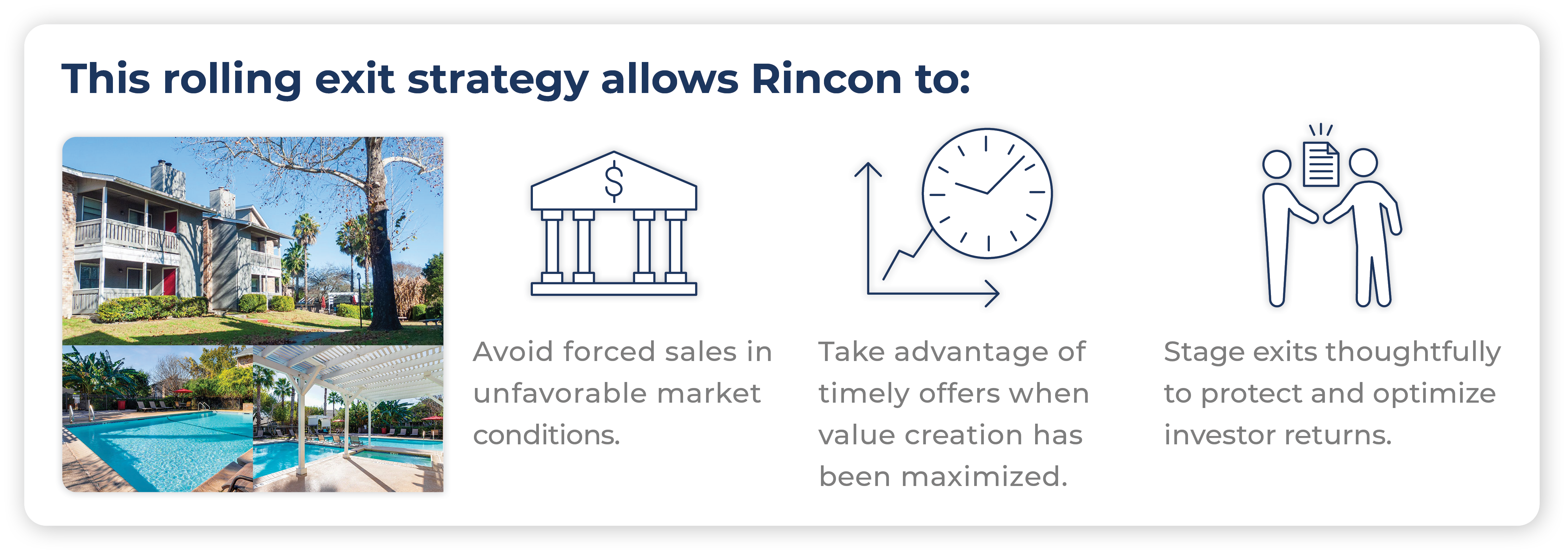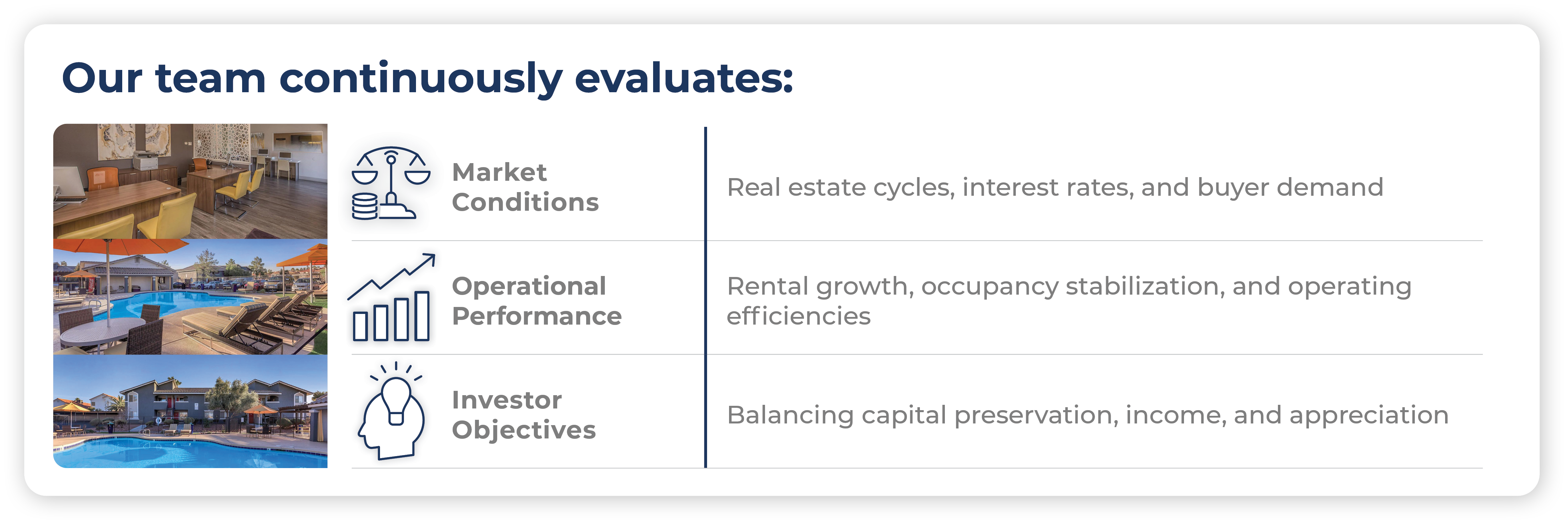0 comments
30, May
0 comments
30, May
In real estate investing, timing isn’t just important; it can be everything. Choosing the right moment to sell an asset can significantly impact the returns investors realize. Exit too early, and you may leave value on the table. Hold too long, and market conditions may shift, diminishing returns.
At Rincon Partners, we understand this delicate balance. That’s why Rincon Multifamily Fund II, LLC is built on a disciplined, data-driven approach to timing and exit strategy, designed to help investors seek to participate in the full value creation cycle of multifamily real estate while aligning with their financial goals and liquidity expectations.
Rincon’s target hold period for individual properties typically ranges from three to five years. Why? Because that’s the timeframe required to fully execute our value-add investment strategy.
Our team focuses on acquiring well-located, underperforming properties with untapped potential, usually in high-growth markets across the Southwest and Southeast U.S. We implement a systematic program of physical renovations, operational improvements, and strategic repositioning to enhance rental income and property value.
But meaningful transformation doesn’t happen overnight. From upgrading unit interiors to improving amenities, stabilizing occupancy, and optimizing property management, these improvements take time to materialize. A 3–5 year hold period allows Rincon to complete these enhancements and position properties for exit when they’ve achieved their full investment potential.
While the target hold period provides a guideline, Rincon’s approach is flexible by design. Each property is monitored individually, and exit decisions are made on a rolling basis as assets reach their investment objectives.
In some cases, market conditions may present an opportunity to sell earlier. In others, holding a property beyond five years may offer an opportunity to capture additional upside. Rincon’s management team retains discretion to adjust timing when it serves investors’ best interests.

A liquidity event could take several forms, depending on market conditions and portfolio performance:
Importantly, Rincon is not obligated to liquidate within a fixed timeframe, nor is there a public market for Units. Investors should expect to hold their investments until assets are sold or the Fund achieves a larger liquidity event. This long-term orientation reflects Rincon’s commitment to stewarding investor capital with care and discipline.
At Rincon, we believe a disciplined exit strategy is just as important as the value-add work that comes before it.

Our goal? To maximize value at the right time, not simply the fastest time.
Rincon Multifamily Fund II, LLC is designed to deliver institutional-quality management with a clear, investor-focused timeline. While real estate investing requires patience, Rincon’s thoughtful approach to timing and exit strategy helps give investors confidence in a strategy that is managed with care, discipline, and a sharp focus on value realization.
To learn more about how Rincon can help your clients achieve their investment goals, visit RinconPartners.com or contact our team today.